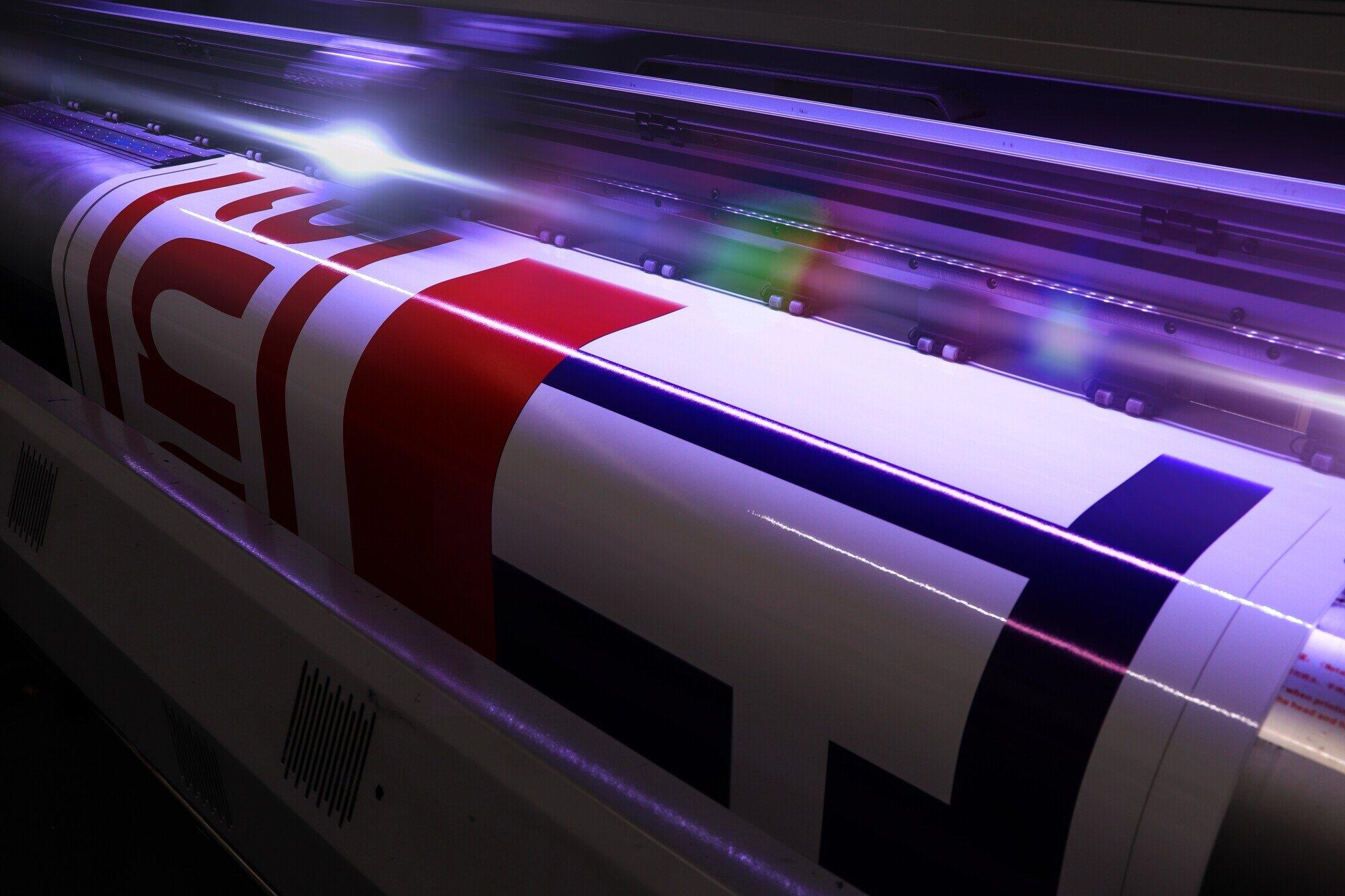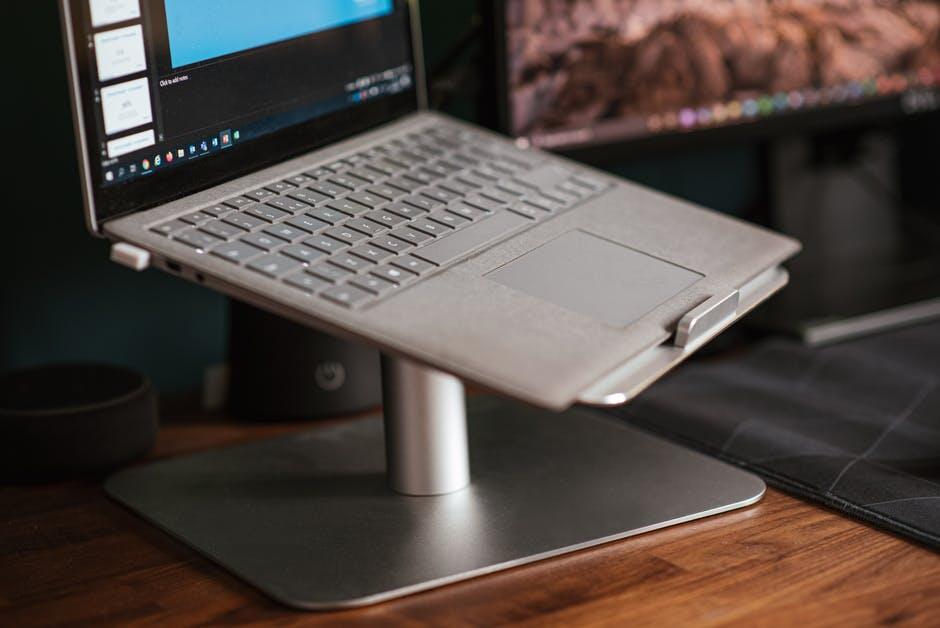Maximizing Efficiency with Automated Digital Printing Solutions
Posted on June 17, 2024 by Logo Design Tips and Tricks

In today’s fast-paced business world, efficiency is key. One area where many businesses can improve their efficiency is in their printing processes.
With the rise of automated digital printing solutions, companies can streamline their workflows. Plus, they can get to expect more than that!
In this post, we’ll explore how you can maximize efficiency with automated digital printing solutions.
Let’s begin!
Streamlined Workflow Processes
Automated digital printing solutions offer a variety of features. It can greatly improve the efficiency of your printing processes. For example, with automated workflows, you can eliminate manual steps. You can reduce the chances of human error. This means:
- faster turnaround times
- fewer mistakes
- lower operational costs
Moreover, these solutions often come with advanced features. This can include job scheduling and automatic file processing. All these can allow you to prioritize and organize your printing tasks seamlessly.
This can save you time and effort in managing your print jobs. This can free up resources for other important tasks.
Reduced Manual Intervention
One of the main advantages of automated digital printing solutions is the reduced need for manual intervention. With traditional printing methods, a lot of time and effort is spent on tasks such as:
- setting up print jobs
- monitoring progress
- troubleshooting issues
Yet, with automated solutions, these tasks are handled by the software or equipment itself. This not only saves time but also reduces the chances of human error. It can also lead to more accurate and consistent results.
With the availability of an online logo maker or other design software, even the initial designing and layout process can be automated. This can then further increase efficiency.
This allows businesses to focus on other important aspects of their operations. Thus, leading to improved productivity.
Enhanced Print Quality and Consistency
Automated digital printing solutions offer advanced features. This includes color management and print calibration. Both of these can improve the quality and consistency of your prints.
With these tools, you can achieve more accurate color reproduction. You can ensure that every print is consistent with your brand’s standards.
Automated solutions allow for more precise control over the final product. This can span from professional printing options to customized templates. This not only saves time and resources. It also ensures that your prints are of the highest quality.
Whether you are hiring a company offering banner printing in Vancouver or utilizing in-house printing services, automated solutions can help you achieve consistent and professional results.
Increased Production Speed
Automated digital printing solutions also offer faster production speeds. These solutions can increase the speed at which your print jobs are completed. This can be achieved through advanced technology and efficient processes.
This is especially beneficial for businesses that have high-volume printing needs or tight deadlines to meet. By leveraging automation, you can get more work done in less time. This can then help by improving productivity and efficiency. This can also help you stay competitive in today’s fast-paced market.
Automated solutions also offer the ability to print on a variety of materials and surfaces. This can expand your printing capabilities and open up new opportunities for your business.
Cost Savings
Automated digital printing solutions can also lead to cost savings for your business. You can save on labor costs and operational expenses. This can be achieved through:
- streamlined workflows
- reduced manual intervention
- faster production speeds
Moreover, you can also save on materials and resources. This can be achieved by minimizing mistakes and reprints due to human error. This makes automated digital printing solutions a cost-effective option for businesses of all sizes.
Improved Inventory Management
Another advantage of automated digital printing solutions is the ability to manage inventory more efficiently. You can now print only what you need when you need it. This comes along with features such as just-in-time printing and on-demand printing. This can help by reducing excess inventory and waste.
Furthermore, you can also gain better insights into your inventory levels. You can do this through real-time tracking and reporting capabilities. This can help you save money on storage costs and prevent overstocking of materials.
Enhanced Flexibility and Customization
Automated digital printing solutions offer a level of flexibility and customization that traditional printing methods cannot match. You can cater to specific customer needs and stand out from your competitors. This comes along with the ability to print on a variety of materials and sizes. You also get to personalize each print with variable data
This level of customization also allows for more targeted marketing campaigns. This can lead to better engagement and higher ROI.
Plus, you can adapt to changing market trends and customer preferences more effectively. This comes along with the ability to make changes and adjustments quickly.
Data-Driven Decision Making
Automated digital printing solutions offer data-driven decision making capabilities. With advanced analytics and reporting tools, you can track and analyze your printing processes. That way, you can identify areas for improvement and make informed decisions about future investments.
By leveraging data, you can continuously optimize your printing processes. You can drive even greater efficiency within your business. This not only helps you save time and resources. It also allows you to make data-backed decisions that can lead to higher profits.
Moreover, you can also use data to gain insights into customer behavior and preferences. This can help you create more targeted and effective printing campaigns.
Environmental Sustainability
Automated digital printing solutions can also contribute to a more sustainable business. You can also minimize your environmental impact and promote eco-friendly practices within your organization. This can be achieved by reducing excess inventory and waste.
Moreover, with the ability to print on demand and only what is needed, you can also reduce your carbon footprint and save on energy usage. This not only benefits the environment. It also helps your business save on costs.
Take Advantage of Automated Digital Printing Solutions
Automated digital printing solutions offer numerous benefits for businesses looking to improve efficiency and streamline their printing processes. These solutions have a lot to offer.
So don’t wait, take advantage of these solutions today and reap the rewards for your business!
Should you wish to read more, visit our blog. We’ve got more topics! Keep browsing!
Best Gaming Laptop Accessories to Boost Your Performance and Gaming Experience
Posted on June 17, 2024 by Logo Design Tips and Tricks

Gaming on a laptop has come a long way. With advancements in technology, gaming laptops can now deliver an experience that rivals that of desktop setups.
However, to truly elevate your gameplay, investing in the right accessories is essential.
In this post, we’ll explore the best gaming laptop accessories that will not only enhance your performance. They will also make your gaming experience more immersive and enjoyable.
Let’s begin!
Gaming Mouse
A gaming mouse is an essential gaming gear for any gamer. Unlike regular mice, a gaming mouse is specifically designed for gamers with features that cater to their needs.
Some of the key features to look for in a gaming mouse include high DPI (dots per inch) sensitivity, customizable buttons, and ergonomic design. These features allow for precise movements and quick reactions during gameplay.
Additionally, some gaming mice come with RGB lighting, which not only adds a cool aesthetic but can also be customized to indicate different game profiles or actions.
Mechanical Keyboard
Similar to gaming mice, mechanical keyboards are designed with gamers in mind. They offer a more tactile and responsive feel compared to traditional membrane keyboards.
Mechanical keyboards also have customizable keys, allowing gamers to create macros for quick actions during gameplay. The loud clickety-clack sound of mechanical keyboards may not be everyone’s cup of tea, but it adds to the overall immersive experience.
Gaming Headset
A good gaming headset can make all the difference in your gameplay. It not only allows for clear communication with your team but also enhances sound effects, making the game more realistic.
When choosing a gaming headset, look for features such as noise cancellation, surround sound, and comfortable padding for long gaming sessions. Such gaming peripherals can also be used for non-gaming purposes, such as listening to music or watching movies.
Cooling Pad
Gaming laptops can get hot quickly, especially during intense gameplay. This is where a cooling pad comes in handy.
A cooling pad is a device that sits under your laptop and helps dissipate heat. It usually has multiple fans that provide better air circulation, preventing your laptop from overheating.
External Graphics Card
While gaming laptops have come a long way in terms of graphics, they still can’t match the power and performance of a desktop’s graphics card. This is where an external graphics card (eGPU) comes in.
An eGPU connects to your laptop via a Thunderbolt 3 port and provides additional processing power for improved graphics and overall gameplay.
Laptop Stand
A laptop stand may not seem like a necessary accessory, but it can improve your gaming experience. It raises the height of your laptop, reducing strain on your neck and shoulders while playing.
Additionally, a laptop stand allows for better air circulation, keeping your laptop cool during long gaming sessions. If you see these laptop stands available here, you’ll quickly realize that they come in many shapes and sizes, making it easy to find one that suits your needs.
Invest In the Best Gaming Laptop Accessories
Investing in the best gaming laptop accessories can greatly enhance your gaming experience. From a high-performance mouse to a powerful external graphics card, these accessories provide gamers with the tools they need to excel in their gameplay.
So don’t hesitate to invest in these essential gaming laptop accessories for the ultimate gaming experience. Upgrade your setup today and take your gameplay to the next level!
Should you wish to read more, don’t hesitate to head to our blog page. We’ve got more!
How to Identify When Your Marketing Activities Are Falling Short
Posted on June 17, 2024 by Logo Design Tips and Tricks

Successful marketing can be the driving force behind a thriving business. However, not all campaigns deliver the expected results. Identifying when your marketing activities are falling short is crucial to recalibrating your efforts and preventing wasted resources.
In this guide, we’ll explore various signs that indicate it’s time to reassess your marketing strategies, and offer practical tips to get back on track.
Poor Return on Investment (ROI)
ROI is a key indicator of the effectiveness of your marketing activities. When you see that the returns do not justify the expenditure, it’s a red flag. To calculate ROI, compare the revenue generated by a campaign to the amount spent on it.
A stagnant or negative ROI suggests that your marketing efforts aren’t generating the desired monetary benefits. To address this, you should:
- reevaluate campaigns
- allocate budget wisely
Break down each campaign to see what works and what doesn’t. Sometimes, small tweaks can make a big difference. Focus more budget on high-performing channels while cutting back on those that consistently underperform.
Declining Website Traffic
Your website is the digital face of your business, and declining traffic can indicate that your marketing strategies are not engaging your audience or driving interest. An effective marketing strategy should steadily grow your online visitor numbers.
Optimize your website content for search engines by doing the following:
- use relevant keywords
- improve site speed
- ensure mobile friendliness
- regularly publish high-quality content
Low Engagement on Social Media
Social media platforms are powerful tools for marketing, but low engagement rates – such as likes, shares, comments, and followers – suggest that your content isn’t hitting the mark. This could mean your posts aren’t valuable or interesting to your audience.
To address this, you should do the following:
- understand your audience
- be consistent
Use analytics to understand what types of content your audience prefers. Tailor your posts to meet their interests and needs.
Make a posting schedule and stick to it. Regular, high-quality posts keep your brand in the minds of your followers.
Decreased Conversion Rates
If you notice these signs, it’s crucial to act quickly. Consider investing in better marketing tools and strategies. You can also read more about small business marketing consultants to help you get back on track.
Conversion rates determine how many website visitors perform a desired action, such as signing up for a newsletter or making a purchase. A decline in this rate can signal that your marketing funnel is not effectively nurturing leads toward these actions. To address this, you should:
- optimize call-to-actions (CTAs)
- consider A/B Testing
Ensure your CTAs are clear, compelling, and placed strategically throughout your website and marketing materials. Experiment with different versions of your landing pages, emails, and other marketing materials to see which versions convert better.
Negative Customer Feedback
Customer feedback is a valuable asset that provides insight into their experiences. A surge in negative feedback could indicate that your marketing messages are misaligned with product or service quality or that there’s a disconnect between what was promised and what was delivered.
To address this:
- engage and respond
- improve transparency
Address negative feedback promptly and constructively. Show that you value their opinions and provide solutions where possible. Ensure your marketing messages accurately reflect your products and services to avoid disappointing your customers.
Poor Email Campaign Performance
Email marketing remains one of the most effective forms of marketing, but only if done correctly. Look at key metrics like open rates, click-through rates, and unsubscribes.
Poor numbers in these areas suggest that your emails aren’t resonating with your audience. A few tips is to do the following:
- personalize emails
- segmentation
Use the data you have to personalize your emails for each recipient. Tailored content can significantly boost engagement. Divide your email list into smaller segments based on behavior, demographics, or past purchases to deliver more relevant messages.
Market Share Stagnation
If your market share is stagnant or declining, it indicates that customers are turning to competitors. This suggests that your marketing efforts may not be potent enough to attract and retain your customer base.
Consider the following to address this:
- competitive analysis
- enhance value proposition
Study your competitors to understand their strategies. Determine what sets them apart and how you can improve your offerings. Make sure your unique selling points are clear and compelling in your marketing communications.
High Bounce Rates
A high bounce rate when visitors leave your site without interacting suggests that your landing pages and content aren’t appealing enough or that they are not delivering on their promises.
Review content quality. Ensure your content is relevant and engaging. High-quality content keeps visitors on your site for longer.
Also, make sure your website is user-friendly. Complicated navigation or slow load times can drive visitors away.
Campaign Fatigue
Campaign fatigue occurs when your audience becomes tired of seeing the same ads or messages repeatedly. This leads to a decline in engagement and effectiveness. How to address it:
Refresh Creative Content. Regularly update your ad creatives and messages to keep them fresh and engaging. Limit the number of times an ad is shown to the same person to avoid overexposure.
Lack of Clear Goals and KPIs
Without clear goals and key performance indicators (KPIs), it’s hard to measure the effectiveness of your marketing activities. Vague or absent goals lead to unfocused strategies and wasted resources. How to address it:
Make sure your objectives are SMART:
- specific
- measurable
- achievable
- relevant
- time-bound
Use analytics tools to regularly monitor your KPIs and adjust your strategies accordingly.
Ineffective Lead Generation
Lead generation is essential for business growth. If you’re struggling to generate new leads, it’s a sign that your marketing strategies need adjustment.
Offer valuable resources like ebooks, whitepapers, or webinars in exchange for contact information. Simplify forms and improve your landing pages to encourage more sign-ups.
Recognizing Signs Your Marketing Activities Need Adjustment
Effective marketing activities are essential for business success. By paying attention to these signs of falling short, you can adjust your strategies accordingly and maximize the return on your marketing efforts.
Remember to always track your progress, analyze results, and continuously fine-tune your strategies to stay ahead in the ever-changing landscape of marketing.
For more on this content, visit the rest of our blog!
Style vs Comfort: How to Choose Between Onesies and Rompers for Your Wardrobe
Posted on June 10, 2024 by Logo Design Tips and Tricks

Choosing between onesies and rompers can be challenging. Are comfort or style your top priority? Everyone’s style preferences are unique. Onesies offer unparalleled comfort for lounging around.
Rompers can add a chic edge to your look. Both options have specific uses and benefits. Onesies and rompers can suit different occasions.
Comfort doesn’t always mean sacrificing fashion. Style preferences play a big role in your decision. Which one fits better into your current wardrobe?
This blog will help you make an informed choice. Let’s dive into the world of onesies and rompers!
Understanding Your Lifestyle
It is crucial to understand your lifestyle. If you spend a lot of time at home or enjoy cozy nights, onesies might be your best bet. They provide maximum comfort and are perfect for lounging or sleeping.
If you have a busy social calendar or like to stay stylishly dressed while running errands, rompers could be the ideal option. Rompers are versatile and can easily be dressed up or down, making them suitable for casual outings and special occasions. Think about your daily activities and social events when deciding which fits best into your wardrobe.
Evaluating the Occasion
When evaluating the occasion, it’s crucial to determine whether your event calls for casual attire or something a bit more formal. Onesies are perfect for laid-back gatherings like movie nights with friends or a relaxed day at home. They combine ease with comfort, allowing you to unwind effortlessly.
Meanwhile, rompers can be your go-to choice for occasions that need a hint of style without going overboard. For brunch, a day out shopping, or a casual dinner, a romper can deliver both comfort and fashion.
Assessing Comfort Levels
Comfort is a key factor when choosing between onesies and rompers. Onesies are made of soft, cozy fabrics like fleece or cotton, providing a warm and snug fit. They are designed to offer ultimate relaxation, which makes them great for lounging or sleeping.
Rompers often feature lighter materials such as linen or jersey, which are comfortable for day-long wear but may not provide the same warmth as onesies. It’s important to consider the climate and your comfort needs. If you value warmth and coziness, a onesie might be ideal.
For those who prefer breathable and lightweight options, a romper could be the better choice. Comfort can be subjective, so try both to see what feels best for you.
Considering Style and Fashion Trends
For style and fashion trends, both onesies and rompers hold their unique charm. Onesies have become increasingly popular in recent years, especially with the rise of loungewear and the shift towards more casual clothing. They come in various designs, from playful animal prints to sleek, minimalist styles, allowing you to express your personality even when you’re at home.
Rompers have remained a fashion staple. They can be found in trendy patterns and colors, aligning with current fashion trends.
Rompers are versatile, pairing well with different accessories to create varied looks. Whether you want to follow the latest trends or stick to a classic style, considering current fashion will help you make an informed choice.
Evaluating Fabric and Material
When evaluating fabric and material, it’s important to consider comfort and functionality. Onesies are often made from warm, cozy fabrics like fleece or flannel, which are perfect for keeping you snug during colder months. They usually have a plush, soft feel that makes lounging extra comfortable.
Rompers are crafted from lighter, breathable materials like cotton, linen, and jersey. These fabrics are ideal for staying cool and comfortable throughout the day.
Breathable materials ensure you don’t overheat, making them perfect for summer or warmer climates. Choosing the right material will enhance your comfort and suit your lifestyle needs.
Examining Versatility
For versatility, rompers and onesies each bring unique benefits. Onesies are fantastic for home wear and are designed to keep you cozy. They can double as sleepwear or loungewear, making them practical for lazy days or nights.
Rompers offer more flexibility for different settings. They can easily transition from day to night with a few accessory changes. Wear a romper with sneakers for a casual look, or pair it with heels and jewelry for a night out.
Their adaptability makes rompers a valuable addition to your wardrobe. Considering how you plan to wear each piece will help you decide which is more versatile for your lifestyle.
Maintenance and Care
Proper maintenance and care are essential to ensure the longevity and appearance of onesies and rompers. Onesies, often made of cozy and delicate fabrics like fleece or flannel, need gentle washing. It’s best to wash them in cold water to preserve their softness and prevent shrinkage.
Use mild detergents and avoid harsh chemicals that can damage the fabric. Air drying is preferable to keep the material fluffy and maintain its shape.
Rompers, often crafted from lighter, breathable fabrics like cotton or linen, are relatively easy to care for. Machine wash them on a gentle cycle with cold water, and tumble dry on low heat to prevent wrinkling.
Always check the care labels on your garments to follow specific guidelines, ensuring they stay in great condition for a long time. By taking good care of your onesies and rompers, you can enjoy their comfort and style for many seasons.
Personal Preference
When choosing between onesies and rompers, personal preference plays a significant role. Your unique style and comfort needs should guide your decision. Some people may prefer the cozy and comforting feel of a onesie, especially for relaxing at home.
Others might lean towards the stylish appeal of a romper, which can be dressed up or down for various occasions. It’s also worth considering what aligns more with your wardrobe choices.
For instance, if rave clothing is your thing, a vibrant romper could seamlessly fit in. The choice between a onesie and a romper boils down to what makes you feel most comfortable and confident.
Learn How to Choose Between Onesies and Rompers for Your Wardrobe
Choosing between onesies and rompers is a personal decision. Both offer unique benefits based on lifestyle needs. Onesies provide a cozy fit for relaxing at home.
Rompers offer versatility for various social occasions. Evaluate your comfort preferences and fashion style. Consider your daily activities and how you dress.
Onesies and rompers each bring their special charm. Choose what aligns with your individuality. Comfort and style can go hand in hand.
Did you find this article helpful? If so, check out the rest of our site for more informative content.








